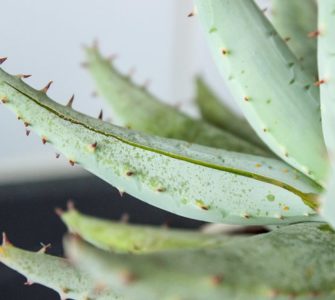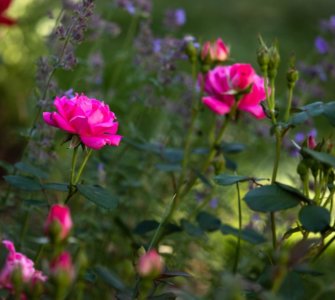Tulips are a lovely addition to any landscape. The time and money invested in acquiring bulbs and planting them leave gardeners with anticipation of Spring to see the fruits of their labor. But what happens if those bulbs are not planted correctly?
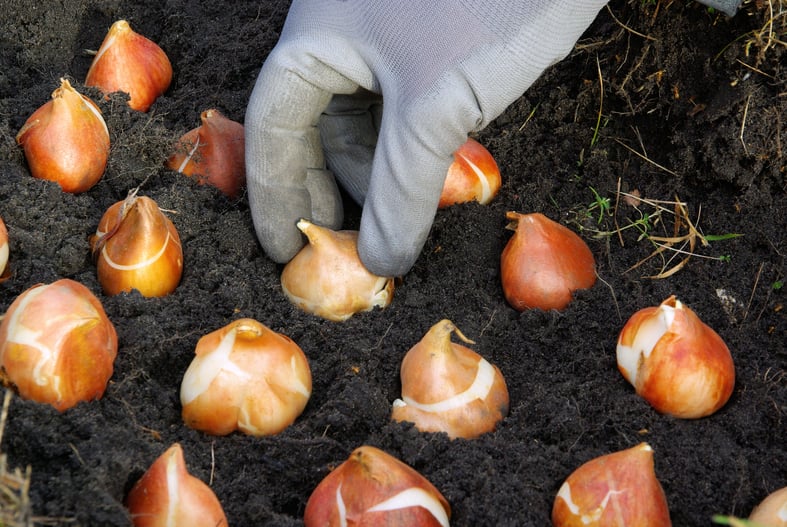
Table of Contents
How Deep Should I Plant My Tulip Bulbs?
North Carolina State Extension recommends planting tulip bulbs 6-8” deep. Bulbs should be placed into the soil with the root end on the bottom and the pointed shoot tip facing up.
When I planted my first batch of tulips, I wasn’t sure how deep to plant them. All throughout that winter, I kept thinking, “What happens if you plant tulips too shallow?” I was worried about my tulips dying from the cold. It wasn’t until I did some research that I discovered I planted them deep enough.
Spacing Between Tulip Bulbs
Gardeners hope to have lush tulips in the Spring. So, how many tulips can you plant together to prevent them from looking too spread out and scraggly? Simply allow about 4” of space in between each bulb.
I never let any of my bulbs touch each other while also ensuring they have enough room to spread as they bloom and for making bulblets when overwintering.
Tulip Overview
- Hardiness: zones 3-8
- Light: full sun – partial shade
- Soil: well-draining
- Bloom: early to late Spring
- Water: moderate (after blooming)
- Planting Depth: 6-8”
- Spacing: 4-6”
Knowing more about what type of tulip to grow makes it easy to select a specific variety.
Tulips are typically identified by their color, petal attributes, size, and when it blooms. These beautiful flowers have unique petal characteristics. Gardeners are drawn to tulips that may have a ruffled or fringe edge, while others prefer the traditional single or double petals. For me, I love planting what’s called a rainbow mix that includes a variety of petal features.
Some tulips are taller than others and may have bigger blooms. Blooming time for a variety of tulips can be anywhere during the early, middle, or end of springtime.
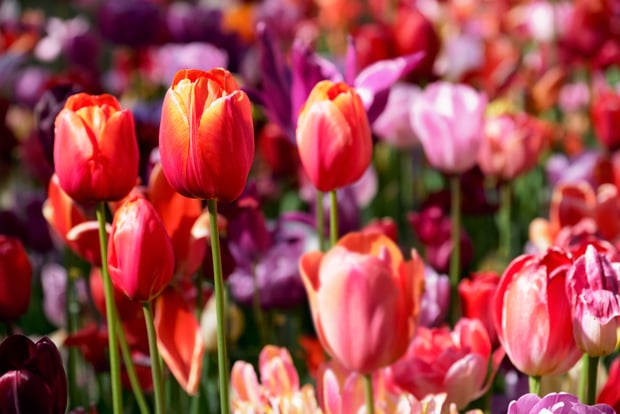
Main Tulip Species
Tulips belong to the lily family (Liliaceae.) The Integrated Taxonomic Information System indicates that the tulip genus (Tulipa) has three recognized species. There are many subspecies and cultivars that fall under one of these main species. Of course, there are far too many to list.
- Tulipa dasystemon (Regel)
- Tulipa gesneriana (Didier’s tulip)
- Tulipa sylvestris (wild tulip)
Planting Tulip Bulbs Outdoors
Because there are so many varieties of tulips, I recommend that gardeners pay special attention to the plant label on what the requirements are. Some tulips may require full sun, whereas others need full sun to partial shade.
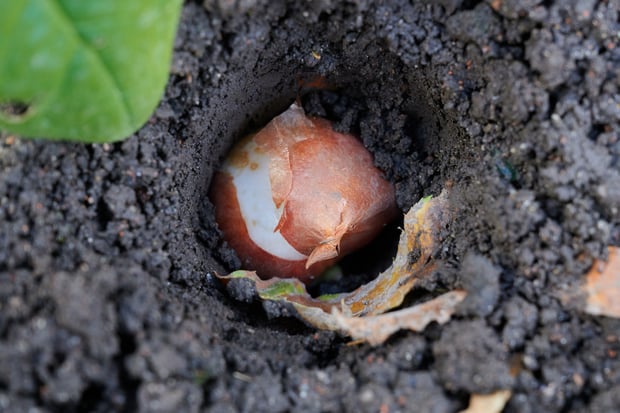
When To Plant Tulip Bulbs
Fall is the best time to plant tulip bulbs. Ideally, it should be on a day when temperatures are in the mid to high sixties. As cool weather sets in, the lower temperatures cause the bulb to start doing its magic.
Should Flower Bulbs Be Soaked Before Planting?
Various online sites have conflicting information on whether or not tulip bulbs should be soaked before planting. The only viable source with information on soaking or not soaking is in Greenhouse Product News Journal. They mention plant growth regulating soaks for commercial crop tulips. My advice is to follow the instructions on the tulip plant label.
Where To Plant Tulip Bulbs
Most tulips prefer sunny areas, so it would stand to reason to plant the bulbs in such an area. However, I purchased early spring-blooming bulbs, and I had amazing luck at planting them around my late-blooming trees (crepe myrtle and magnolia.) There was ample sunlight coming through these trees as their foliage had not yet bloomed.
Tulip bulbs planted for Spring do best if planted in south-facing sunny areas. Sloping retaining walls or tiered landscaping are perfect for tulips because the soil is well-draining. Flat areas tend to potentially stay wet or pool water, and that last thing tulips want is soggy conditions.
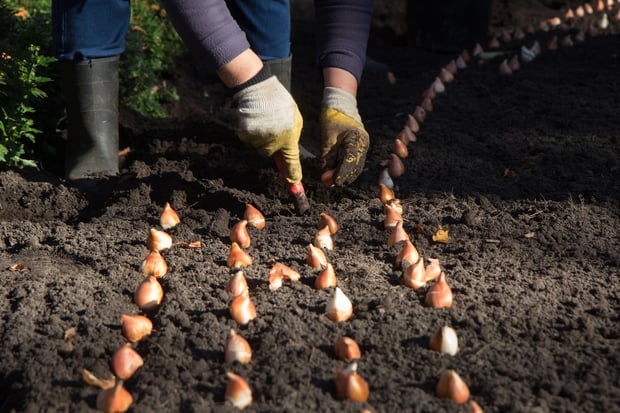
Lastly, I kept my tulip bulbs in-ground for another season; however, to do this, I had to ensure they were getting full sun to not only be at their best but to be able to overwinter.
Preparing The Soil For Tulip Bulbs
According to the University of Illinois Extension, the soil where tulips are to be planted requires a bit of preparation before planting. I amended my soil by “fluffing” it up a bit with peat moss. I dug up about 16” of the soil and loosened it up, and began working the peat moss into it. The bottom 8” I worked some phosphorus in to keep the roots of my tulips happy and thriving.
As far as soil pH, I always test my soil before planting or making any amendments. Luckily mine has always been in a good range; however, if the soil isn’t about 6-7 pH, lime may need to be added to help. I use a 3-in1 soil meter that tells me exactly what the pH is.
Many of my readers have asked me about fertilizer for outdoor tulip bulbs. I supplement the soil with 10-10-10 bulb fertilizer (about ½ a cup.) This same fertilizer (and amount) should be added again just after I see the tulips starting to sprout up. Additional treatment can be done once the blooms are in place.
After planting the tulip bulbs, I place a few inches of mulch on top to keep the bulbs warm until Spring arrives.
How Long Does It Take Tulip Bulbs To Bloom?
My gorgeous tulips poked their heads up as spring temperatures began to get warmer. As days stayed within the 60s consistently, I began to watch the flowers emerge, and by about three weeks, they were up and standing in all their glory!
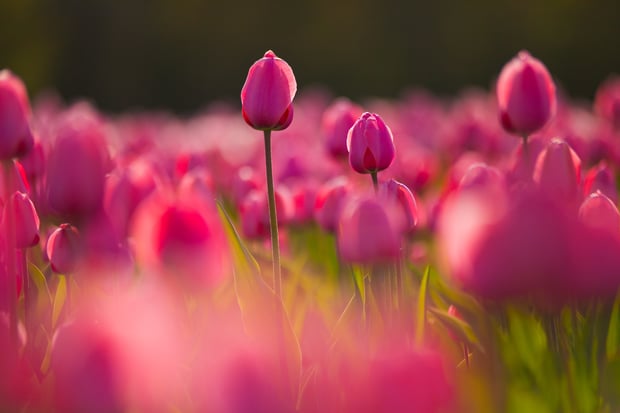
How To Plant Tulip Bulbs In Pots
Tulip bulbs also make lovely container specimens for patios or porches. For those living in apartments with a balcony, container tulips are perfect for adding a bit of spring beauty. To plant tulip bulbs in a pot, a few things need to be done.
The first (perhaps most important) element of gardening indoors, patio, or balcony is to have everything I need in one place. I am very proud of my indoor gardening tool kit and I highly recommend that all gardeners have one.
A container that has ample drainage holes is a must. The size of the container should be 6-8” deep at the very minimum. Use a good quality organic potting mix. Place each bulb 4” apart and 6” deep. Cover with potting mix and lightly water. If the container stays outdoors during the winter, place a few inches of soil cover (preferably mulch) on the top of the soil. Fertilize in the same way as if you were planting them in-ground but reduce the fertilizer to one teaspoon.
I brought my container tulips indoors, where they bloomed during the winter, surprising us with a bit of Spring with snow on the ground outside! Learning how to plant tulip bulbs in pots is super easy and a real treat if cultivated indoors.
Tulips Are Too Good To Pass Up!
Tulips, roses, peonies, and lavender are my all-time favorites when it comes to flowers. Every time their beauty fills my eyes and their fragrance tickles my nose; I grow to love gardening more and more. Growing tulips from bulbs is something everyone should try in their gardening endeavors!
